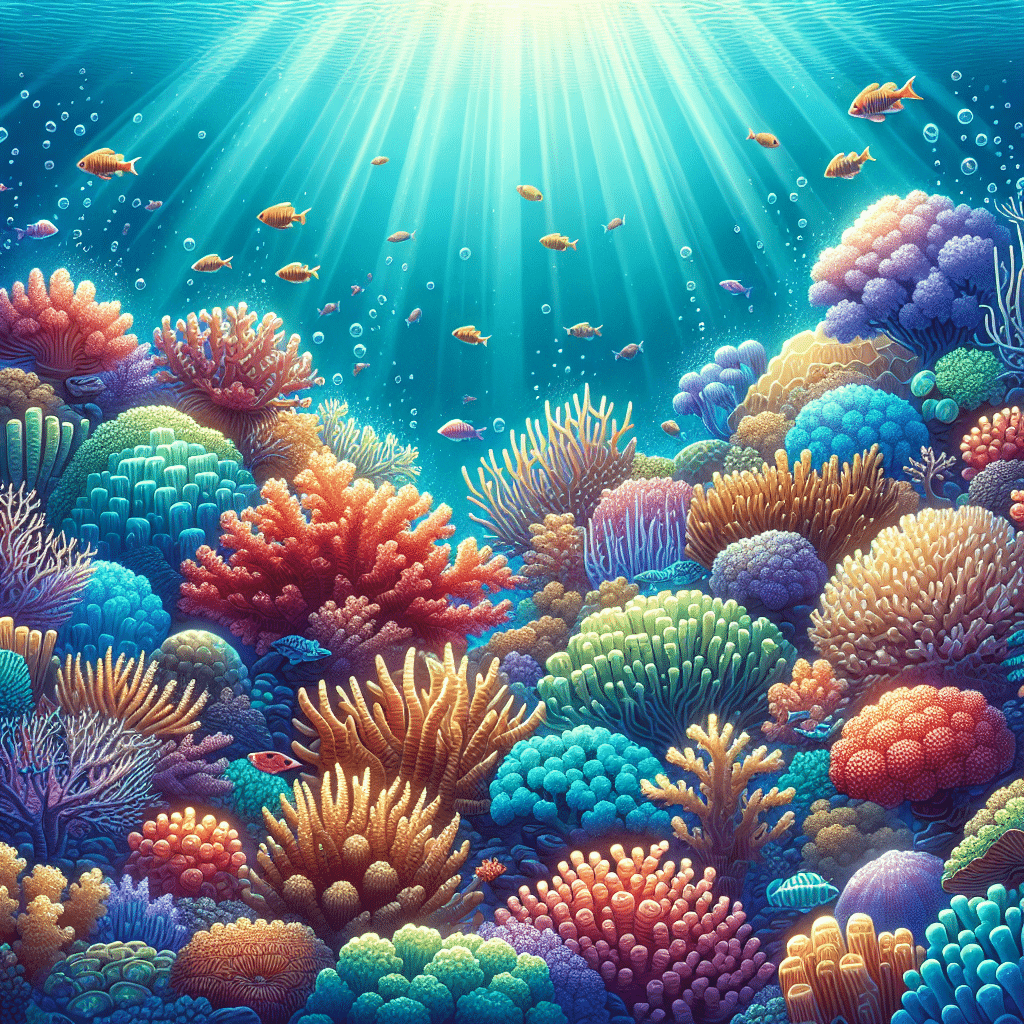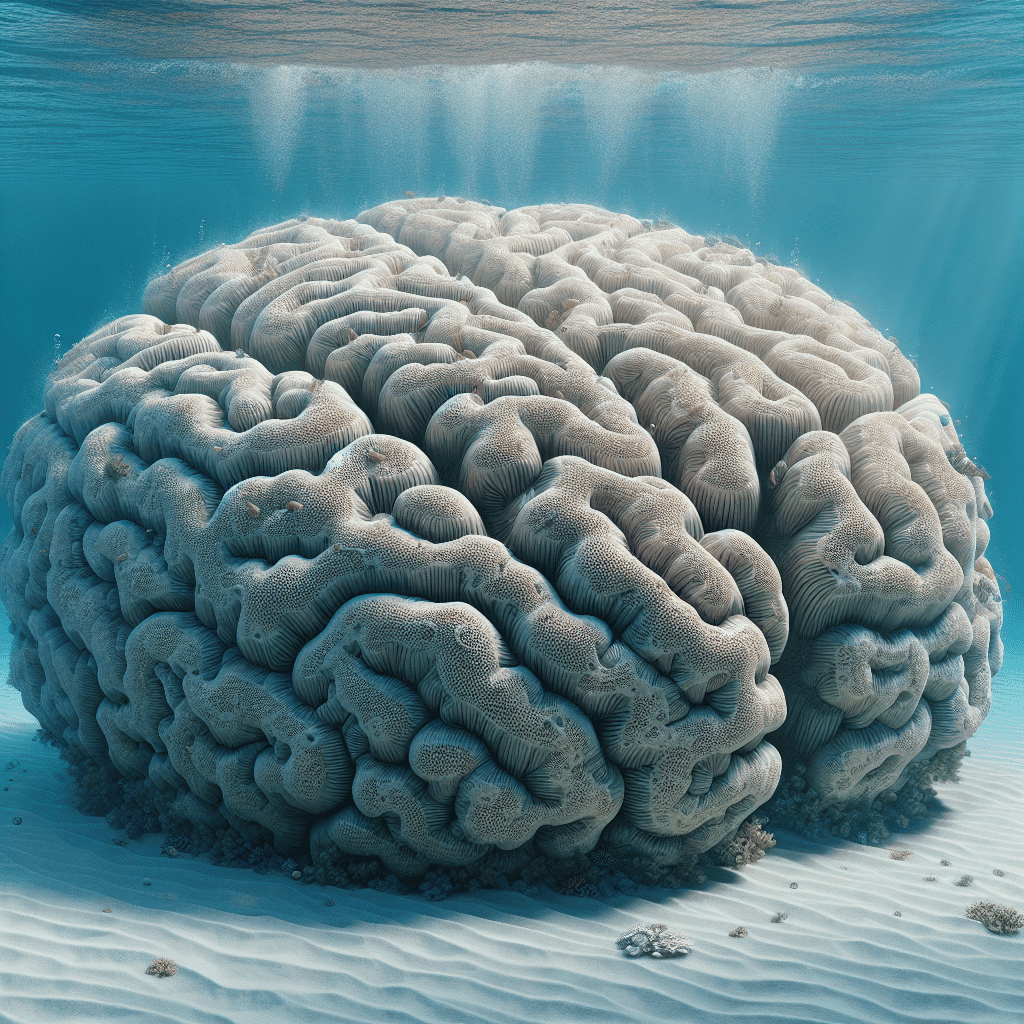Introduction to Kenya Tree Coral
Origin and Habitat
I find the Kenya Tree Coral, scientifically known as Capnella sp., to be a fascinating addition to any reef tank. It’s native to the warm waters of the Western Indian Ocean, particularly around Kenya and Tanzania. This coral thrives in shallow reef environments with moderate water flow, often growing on rocks or rubble. It can also be found in diverse regions from the Red Sea to the western Pacific, including the African islands of Zanzibar and Madagascar, and even as far as Australia and the Philippines (Saltwaterfish.com, FantaSEA Aquariums).
Appearance and Characteristics
One of the most appealing aspects of Kenya Tree Coral is its distinctive tree-like branches that sway gracefully in the water. This creates a mesmerizing display that resembles underwater foliage. I appreciate the vibrant color variations, which can include shades of green, brown, or pinkish hues. This adaptability makes it a popular choice among reef enthusiasts who want to add a captivating presence to their tank.
Kenya Tree Coral is also known for being hardy and fast-growing, making it suitable for both beginner and experienced aquarists. Its ability to thrive in a range of tank conditions is a significant advantage. This coral brings not only natural color but also movement to the underwater environment, enhancing the overall aesthetic of the reef setup. If you’re interested in exploring more about corals, check out our section on corals.
Care and Placement of Kenya Tree Coral
Taking care of Kenya Tree Coral is pretty straightforward once you know their needs. Here’s what I’ve learned about the lighting, water flow, and feeding requirements for these beautiful corals.
Lighting Requirements
Kenya Tree Coral can adapt to a variety of lighting conditions, but for optimal growth and coloration, moderate to high lighting is generally recommended. I’ve found that using LED lighting with a spectrum that includes blue and violet wavelengths works wonders for these corals (Coral Company). While they can handle lower light levels, placing them in spots with low to medium light levels in the aquarium mimics their natural habitat.
| Lighting Level | Recommendation |
|---|---|
| Low | Possible but not ideal |
| Moderate | Optimal for growth |
| High | Best for coloration |
Water Flow Recommendations for Kenya Tree Coral
When it comes to water flow, Kenya Tree Coral thrives in moderate to high flow conditions. They can handle a good amount of water movement, which helps in bringing nutrients to the coral and removing waste. I’ve positioned mine near the bottom of the tank, where the flow is consistent but not too harsh, and it seems to be doing well.
| Water Flow | Recommendation |
|---|---|
| Low | Not suitable |
| Moderate | Good for growth |
| High | Excellent for health |
Kenya Tree Coral Feeding Guidelines
Kenya Tree Coral is photosynthetic and gets a significant amount of nutrition from symbiotic algae called zooxanthellae. However, they also enjoy a little extra feeding. I usually supplement their diet with liquid coral foods, phytoplankton, or zooplankton. This extra feeding helps them thrive, especially in a home aquarium setting (Coral Company).
| Feeding Type | Recommendation |
|---|---|
| Photosynthesis | Primary nutrition source |
| Supplementary Feeding | Liquid coral foods, phytoplankton, zooplankton |
For anyone looking to keep Kenya Tree Coral in their reef tank, understanding these care and placement factors is essential for maintaining their health and beauty.
Tank Environment for Kenya Tree Coral
Creating the right tank environment for Kenya Tree Coral is essential for its health and growth. This section focuses on two critical aspects: water quality parameters and suitable tank mates.
Water Quality Parameters for KTC
Kenya Tree Coral is relatively adaptable when it comes to water quality. Unlike some other corals, it doesn’t rely heavily on photosynthesizing symbiotic algae (zooxanthellae) for food, which makes it less demanding in terms of water quality. It can thrive in normal reef parameters and even in nano tanks. Here are the key water quality parameters to maintain:
| Parameter | Ideal Range |
|---|---|
| Temperature | 72°F – 78°F (22°C – 26°C) |
| pH | 8.1 – 8.4 |
| Salinity | 1.023 – 1.025 |
| Ammonia | 0 ppm |
| Nitrite | 0 ppm |
| Nitrate | < 10 ppm |
Ensure regular testing to maintain these levels, which will help keep your Kenya Tree Coral healthy. For further information on maintaining water quality, check out our article on corals.
Suitable Tank Mates
When selecting tank mates for Kenya Tree Coral, it’s important to consider its moderately aggressive nature. Kenya Tree Corals can sting other corals as they grow and excrete compounds that can be toxic to other species’ cells. Here’s a list of suitable tank mates that can coexist well with Kenya Tree Coral:
- Peaceful Fish: Clownfish, Gobies, and Blennies
- Other Corals: Zoanthids, Mushroom Corals, and Leather Corals
- Invertebrates: Snails, Shrimp, and Starfish
Avoid placing Kenya Tree Coral next to corals that are sensitive to stinging, such as torch coral or brain coral, as they may suffer due to its aggressive growth. For more insights on other coral types, explore our articles on mushroom coral and black coral.
By ensuring proper water quality and selecting compatible tank mates, I find that Kenya Tree Coral can thrive beautifully in a reef tank environment.
Growth and Propagation of Kenya Tree Coral
Growth Rate
The Kenya Tree Coral is known for being a hardy and fast-growing species, making it a favorite among both beginner and experienced aquarists. Under ideal conditions, it can reach a height of about 4 to 6 inches (10 to 15 cm) and may spread across a few additional inches (Saltwaterfish.com). With proper care, this coral can have a lifespan of several years or more in a well-maintained aquarium.
| Growth Measurement | Size |
|---|---|
| Height | 4-6 inches (10-15 cm) |
| Spread | A few more inches |
| Lifespan | Several years |
With the right environment, dedicated hobbyists can quickly propagate fragments or broken pieces of Kenya Tree Coral, encouraging the growth of new colonies (LiveAquaria).
Propagation Techniques
There are a few techniques to propagate Kenya Tree Coral effectively. Since it’s known for its rapid growth, propagation can be both satisfying and rewarding. Here are some methods I’ve found useful:
Fragmentation: This method involves taking a healthy branch from the main coral. Using a sharp, clean tool, carefully cut a section of the coral, ensuring that it includes some polyps. The fragment can then be attached to a small rock or frag plug using super glue or putty.
Natural Splitting: Sometimes, the coral may naturally split or break due to water flow or tank conditions. If this happens, it’s best to let nature take its course and allow the fragments to attach themselves to substrate or rock in the tank.
Cultured Frags: Many reef hobbyists sell or trade cultured frags of Kenya Tree Coral. This is a great way to expand your collection without taking from the wild.
For optimal growth, make sure to provide moderate to high lighting for the coral, as it thrives in such conditions. Using LED lights with a spectrum that includes blue and violet wavelengths will help enhance its coloration and growth (Salty Bottom Reef Company). Also, consider incorporating supplemental feeding with marine snow or coral-specific planktonic foods 1-2 times per week to support growth and vibrant coloration (Salty Bottom Reef Company).
Diseases and Pests
Common Health Issues
As a hobbyist, I’ve learned that Kenya tree corals can have their fair share of health challenges. One notable issue is that they are considered moderately aggressive. This means they can sting neighboring corals as they grow, potentially leading to harm or even fatality for those other species. To avoid any trouble, I recommend leaving plenty of space between Kenya tree corals and other corals in the tank (FantaSEA Aquariums).
Another important point to keep in mind is that Kenya tree corals are somewhat “hungry” creatures. They thrive on regular feedings, and I’ve found that spot feeding with phytoplankton once a week is a great way to supplement their diet. This is especially important if your reef tank doesn’t have a refugium. They also benefit from supplemental feeding of micro-plankton and other foods designed for filter-feeding invertebrates (LiveAquaria).
| Common Health Issues | Description |
|---|---|
| Aggressiveness | Can sting neighboring corals. |
| Nutritional Needs | Requires regular feedings to thrive. |
| Cytotoxic Compounds | Excretes compounds that can inhibit the growth of other corals. |
Pest Prevention and Treatment
When it comes to pest prevention, I’ve noticed that maintaining a good distance between Kenya tree corals and other species in my tank has been essential. Their ability to excrete cytotoxic compounds, like sesquiterpenes, can inhibit the growth of other coral species. However, the good news is that these compounds don’t harm fish, making Kenya tree corals compatible with reef-safe fish such as clownfish, gobies, and blennies (FantaSEA Aquariums).
To keep pests at bay, it’s crucial to monitor the overall health of your tank regularly. Ensuring stable water conditions can help prevent any outbreaks. If I notice any signs of pests, I take immediate action by isolating the affected coral and treating it accordingly. Maintaining a clean tank environment, along with regular water quality checks, can minimize the risk of pests invading your Kenya tree coral.
| Pest Prevention Tips | Description |
|---|---|
| Maintain Distance | Keep ample space between corals to prevent aggression. |
| Monitor Water Conditions | Regular checks help prevent outbreaks. |
| Isolate Affected Corals | Treat affected corals promptly to prevent spread. |
By staying vigilant and providing the proper care, I’ve found that I can enjoy my Kenya tree coral while keeping it healthy and thriving in my reef tank. If you’re interested in learning more about other corals, feel free to check out my articles on xenia, brain coral, and more!
Acclimation Process
Acclimating my Kenya Tree Coral is an essential step in ensuring its health and survival in my reef tank. Proper acclimation helps the coral adapt to the new environment, reducing stress and promoting growth.
Proper Acclimation Procedure
To acclimate my Kenya Tree Coral effectively, I follow these steps:
Prepare the New Environment: Before introducing the coral, I ensure that my tank’s water parameters are stable and suitable for Kenya Tree Coral, including temperature, salinity, and pH levels.
Float the Bag: I place the sealed bag containing the coral in the aquarium for about 15-20 minutes. This allows the temperature of the water inside the bag to equalize with that of my tank.
Gradual Water Mixing: After floating the bag, I slowly add small amounts of my tank water into the bag every 5-10 minutes. This process typically lasts for about 30 minutes to an hour.
Transfer to the Tank: Once the coral has acclimated to the tank water parameters, I carefully remove it from the bag using clean hands or a net, avoiding any excess water from the bag. I then place the coral on live rock or reef substrate, ensuring it’s adequately spaced for future growth.
Monitor and Adjust: I keep a close eye on the coral for a few days after introducing it to the tank, observing its behavior and health.
Monitoring Coral Health
After acclimating my Kenya Tree Coral, I monitor its health closely. Here are some signs I look for:
| Health Indicators | Description |
|---|---|
| Coloration | The coral should maintain vibrant colors. Fading may indicate stress. |
| Polyp Extension | Healthy Kenya Tree Corals will extend their polyps, indicating that they are feeding and thriving. |
| Growth Rate | I watch for signs of growth, as Kenya Tree Coral is known for being a fast grower. |
| Behavior | Any unusual retraction or lack of movement may signal an issue. |
If I notice any issues, such as changes in coloration or polyp extension, I take immediate action. For example, I may check water quality parameters, such as salinity and pH, and ensure that there are no aggressive tank mates nearby.
Overall, by carefully following the acclimation process and keeping a watchful eye on my coral’s health, I can create a thriving environment for my Kenya Tree Coral and enjoy its beauty in my reef tank. For more details on caring for other types of corals, check out our articles on xenia, brain coral, and mushroom coral.
Sustainability and Aquaculture
Success in Captive Breeding
I’ve discovered that the aquaculture of Kenya Tree Coral (Capnella sp.) has been notably successful, which is great news for reef tank hobbyists like me. This success has led to an increase in availability and sustainability within the hobby. Captive-bred specimens are now quite common in the aquarium trade, making it easier for us to source healthy, thriving corals without relying heavily on wild populations.
The adaptability of Kenya Tree Coral to various environments is also a plus. This coral species thrives in a range of habitats, from deeper reefs to more turbulent coastal zones, which makes it resilient and easier to manage in home aquariums.
Availability in the Hobby
For hobbyists looking to add Kenya Tree Coral to their reef tanks, the availability is quite promising. This coral is known for its hardy nature and fast growth, making it ideal for both beginners and experienced aquarists. I appreciate that it comes in a variety of shades, including green, brown, and pinkish hues, which can really enhance the visual appeal of my tank (Salty Bottom Reef Company).
As the demand for sustainable coral options increases, I find it reassuring that species like the Kenya Tree Coral are becoming more accessible through responsible aquaculture practices. This not only supports our hobby but also helps protect wild coral populations that face various environmental threats. If you’re interested in more coral varieties, consider checking out other options like xenia, brain coral, and leather coral.



